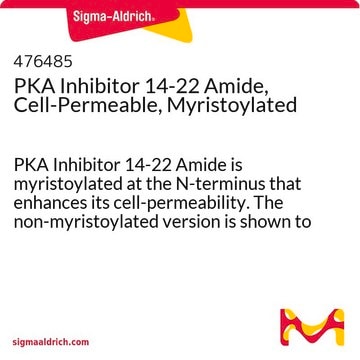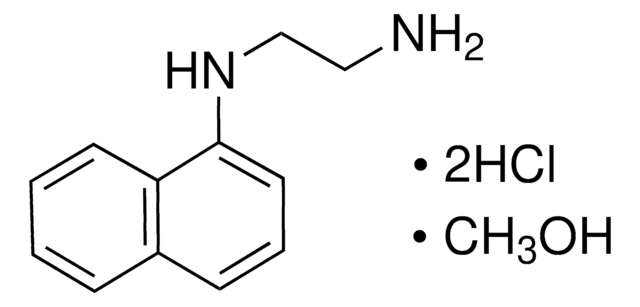198250
Rose bengal
certified by the Biological Stain Commission, Dye content ≥80 %
동의어(들):
4,5,6,7-Tetrachloro-2′,4′,5′,7′-tetraiodofluorescein disodium salt, Acid Red 94, Bengal Rose B sodium salt, Rose Bengal sodium salt
About This Item
추천 제품
Grade
certified by the Biological Stain Commission
형태
powder
구성
Dye content, ≥80%
색상
dark violet
solubility
H2O: 1 mg/mL
λmax
548 nm
ε (흡광계수)
≥90000 at 546-550 nm at 0.008 g/L
응용 분야
diagnostic assay manufacturing
hematology
histology
저장 온도
room temp
SMILES string
[Na+].[Na+].[O-]C(=O)c1c(Cl)c(Cl)c(Cl)c(Cl)c1C2=C3C=C(I)C(=O)C(I)=C3Oc4c(I)c([O-])c(I)cc24
InChI
1S/C20H4Cl4I4O5.2Na/c21-10-8(9(20(31)32)11(22)13(24)12(10)23)7-3-1-5(25)16(29)14(27)18(3)33-19-4(7)2-6(26)17(30)15(19)28;;/h1-2,29H,(H,31,32);;/q;2*+1/p-2
InChI key
UWBXIFCTIZXXLS-UHFFFAOYSA-L
유사한 제품을 찾으십니까? 방문 제품 비교 안내
관련 카테고리
일반 설명
애플리케이션
- Conn′s technique for bacteria in soil and Kreyberg′s stain for keratin and mucus
- counterstaining hematoxylin
- staining cellular inclusions, together with Bismark brown
Storage Class Code
11 - Combustible Solids
WGK
WGK 3
Flash Point (°F)
Not applicable
Flash Point (°C)
Not applicable
개인 보호 장비
Eyeshields, Gloves, type N95 (US)
시험 성적서(COA)
제품의 로트/배치 번호를 입력하여 시험 성적서(COA)을 검색하십시오. 로트 및 배치 번호는 제품 라벨에 있는 ‘로트’ 또는 ‘배치’라는 용어 뒤에서 찾을 수 있습니다.
이미 열람한 고객
자사의 과학자팀은 생명 과학, 재료 과학, 화학 합성, 크로마토그래피, 분석 및 기타 많은 영역을 포함한 모든 과학 분야에 경험이 있습니다..
고객지원팀으로 연락바랍니다.











